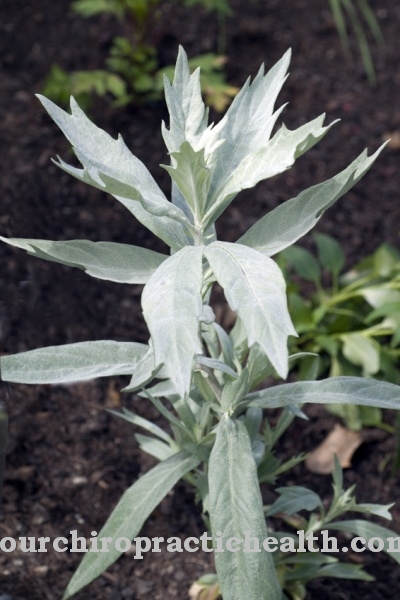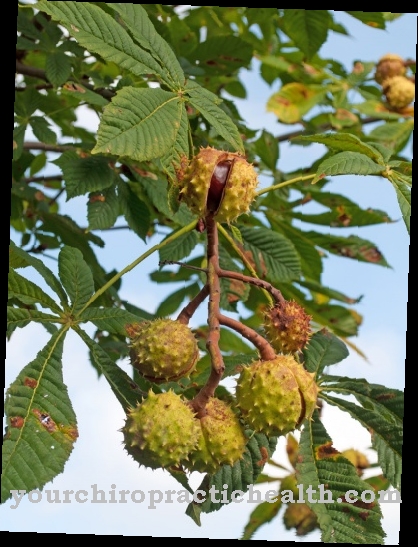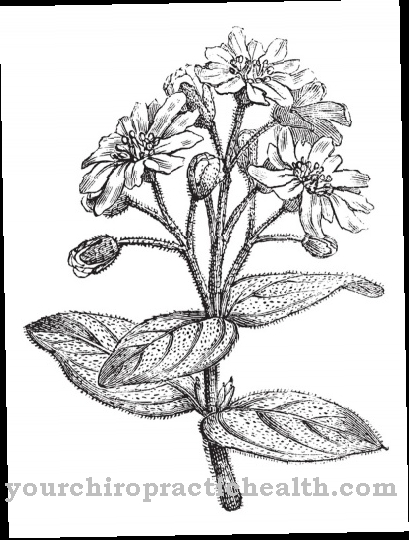The Bearberry or Real bearberry has been known to us as a medicinal plant since the 13th century. Since it is becoming increasingly rare, it is one of the protected plant species.
Occurrence & cultivation of the bearberry

The bearberry has small, thick, oval leaves that are leathery in texture. There are reticulated grains on the leaf surface. Small white to pink flowers grow out of various leaf axils and hang down like grapes. Red berries, which have a floury taste, form from these flowers.
Effect & application
Bearberry has been used as a medicinal plant since the Middle Ages. In addition to being used as a medicinal plant, it was also worn on the body for magical purposes to protect against ghosts. The North American Indians used it for religious rites.
The healing properties of the bearberry are mainly in its leaves. In addition to tannins, they contain the active ingredient arbutin, which can be converted into hydroquinone and methylhydroquinone in the body in an alkaline environment. These active ingredients have anti-inflammatory and antibiotic effects, especially in the urinary tract. This makes bearberry leaves very helpful in treating bladder and kidney infections. This effect has been scientifically proven.
Bearberry is most commonly used as a tea, but the active ingredients are also available in the form of coated tablets, tablets and drops. In homeopathy, the fresh leaves and young tips of the branches are mainly used. For a tea, 1 tablespoon of bearberry leaves per cup is brewed with hot water for 5 minutes and must be drunk warm.
A cold water extract, which is brewed the next day, is even more effective and digestible because there is no irritation from tannins. Bearberry leaves are often combined with other medicinal plants such as field horsetail, restraint, goldenrod and birch leaves and offered as bladder and kidney teas. The effect is more intense with the pure bearberry leaf tea than with the ready-made mixes.
If you want to process bearberry leaves yourself, you have to take into account that the plant may not be collected in the wild because it is under nature protection. If they are in your own garden, the leaves must be dried quickly after harvest. If they are kept fresh for too long, they lose their effectiveness because the arbutin, which is converted to hydroquinone in the body, is lost.
Bearberry leaves were used as early as the Middle Ages for urinary tract diseases and biliary problems. They were even applied to open wounds and were able to develop their antibiotic and anti-inflammatory effects. In Scandinavia, where the bearberry is even more common, the grapes are also used in the kitchen. In the past, the leaves were also used to dye wool.
Bearberry leaves in loose form and as ready-made preparations are available in pharmacies and sometimes also in drugstores. However, the package insert should be read carefully before use.
Importance for health, treatment & prevention
Bearberry leaf tea helps very well with bladder and kidney infections, which can be treated without antibiotics. With these complaints it can develop its antibacterial and antibiotic effects. However, this only develops in alkaline urine. If you have a bladder infection with a fever and blood in the urine, antibiotics are prescribed. They should also be taken long enough to avoid potentially dangerous kidney inflammation. In this case, the treatment with the tea should only be a supplement to conventional medical treatment.
Bearberry leaf tea is by no means a harmless house tea and should only be drunk if you have urinary tract diseases because it can have side effects - albeit rarely. In the case of a sensitive stomach, the tannins in the leaves can cause nausea and stomach pains and gastrointestinal problems. Sometimes skin sensitivities such as itching and redness can also occur. Because a higher dose of hydroquinone can cause liver damage and have a carcinogenic effect, bearberry must not be used on pregnant women, nursing mothers and children. It is also not recommended for people with liver disease.
According to the expert advice, treatment should only last a maximum of 7 days, whereby a daily dose of 12 g should not be exceeded. It should also take place no more than 5 times a year because long-term effects have not yet been researched. Since the full effect of bearberry is only guaranteed in alkaline urine, acid-promoting medication should not be taken during the treatment and acid-forming foods such as meat should be reduced. Adequate hydration helps flush out the urinary tract.
A prevention with bearberry leaves is generally not recommended because of the strong effect of the tea. Use should be restricted to urinary tract infections only. It is sufficient to start treatment at the first signs of cystitis such as burning sensation when urinating, frequent urination and abdominal pain.
























.jpg)



